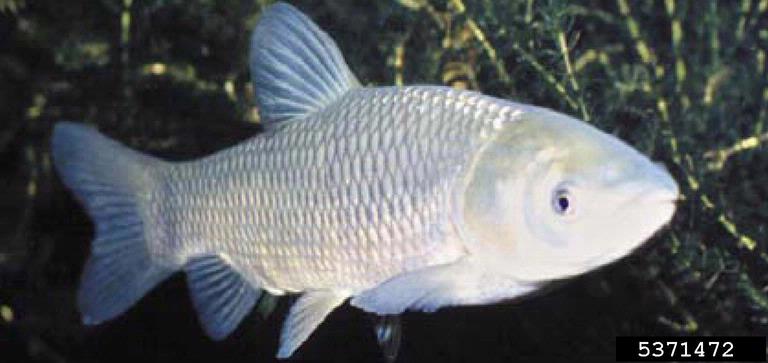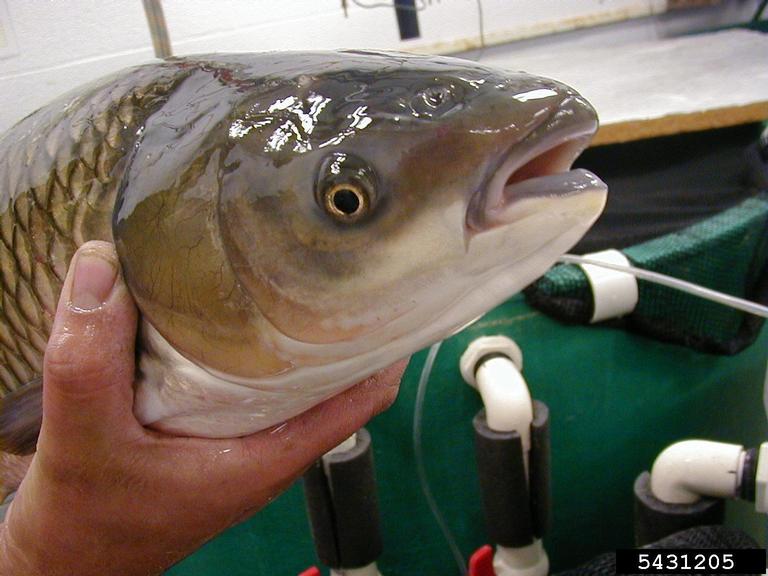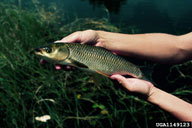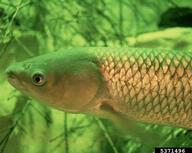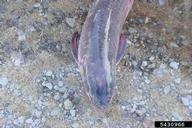Origin
Ctenopharyngodon idella is native to Eastern Asia, from southern Russia to northern Vietnam. Grass carp were intentionally stocked for vegetation management in Alberta, Saskatchewan, and the United States as well as part of the live food fish industry and the water garden trade. C. idella escaped from aquaculture ponds into the Mississippi River watershed during floods in the United States.
Life Cycle
Adult C. idella spawns in fast-moving rivers at temperatures 68–86 degrees F (20–30 degrees C). Spawning occurs at the water’s surface and fertilization occurs externally. Larvae migrate into lakes and as juveniles, they migrate up or downstream.
Distribution
Spreading naturally from the Mississippi River watershed through several large river systems that border the U.S. waters of the Great Lakes. In Canada, reports of individual fish in Ontario caught in Lake Erie, the Grand River (a tributary to Lake Erie), southern Lake Huron, and the Don River (a tributary to Lake Ontario) and in the provinces of Alberta and Saskatchewan. In the United States, C. idella is reported in the Mississippi, Missouri, Wabash, Illinois and Ohio River systems; the waters of Lake Erie in Michigan and Ohio; the Sandusky and Cuyahoga rivers which are both tributaries to Lake Erie in Ohio; recorded in a total of 45 states.
Control Efforts
Possession of live grass carp was prohibited in Ontario in 2005. Feeds on aquatic and terrestrial vegetation, uproots aquatic grasses and removes aquatic vegetation. Feeding behavior may alter spawning, nursery and feeding habitats used by native fish, birds, and invertebrates. Only about half of the plant material consumed each day is digested and the rest is expelled into the water as waste which may promote algal blooms, reduce water quality and lower dissolved oxygen levels in the water. Electric barriers can be installed to prevent the spread.
http://entnemdept.ufl.edu/creatures/BENEFICIAL/MISC/Ctenopharyngodon_idella.htm

